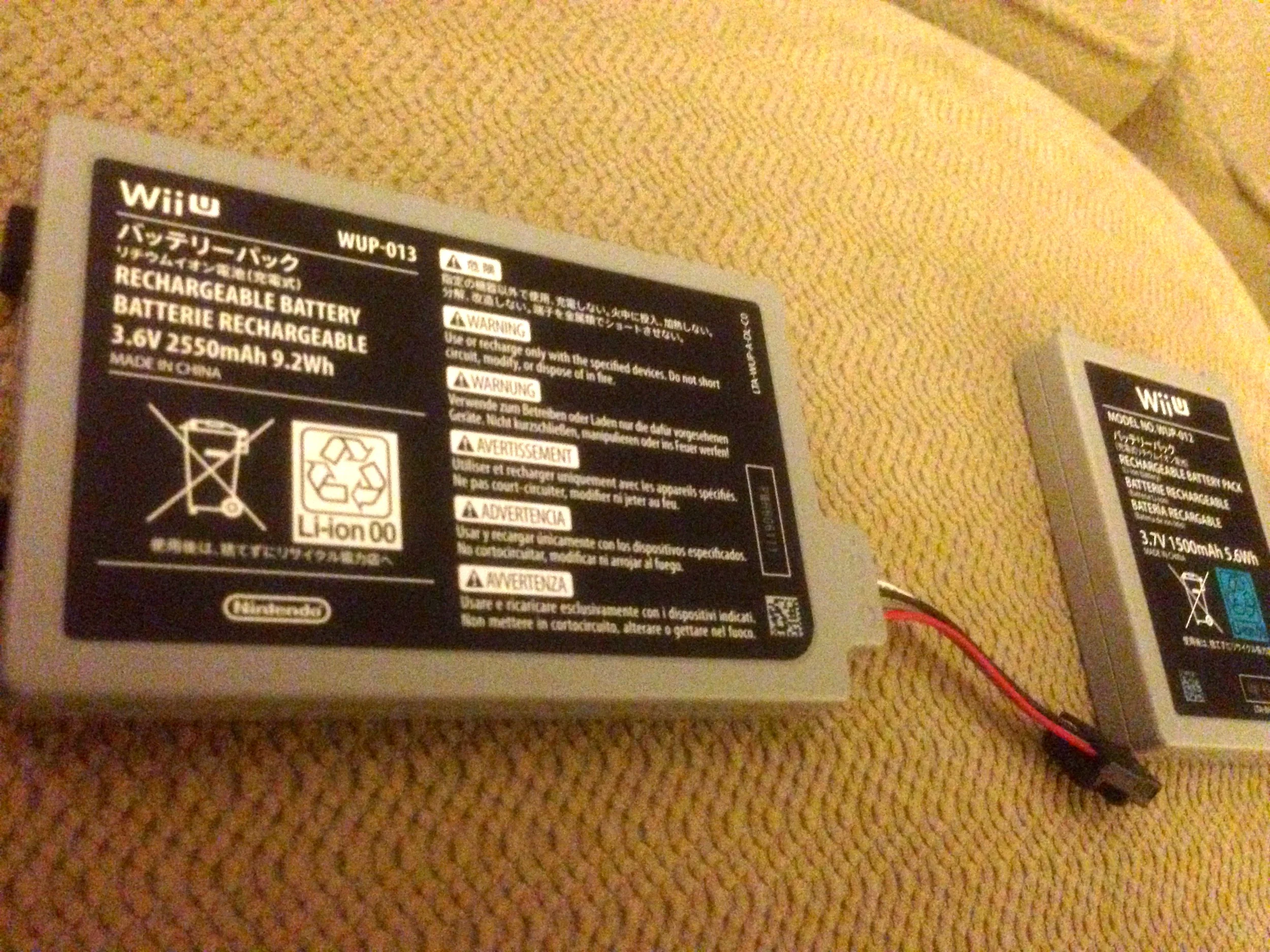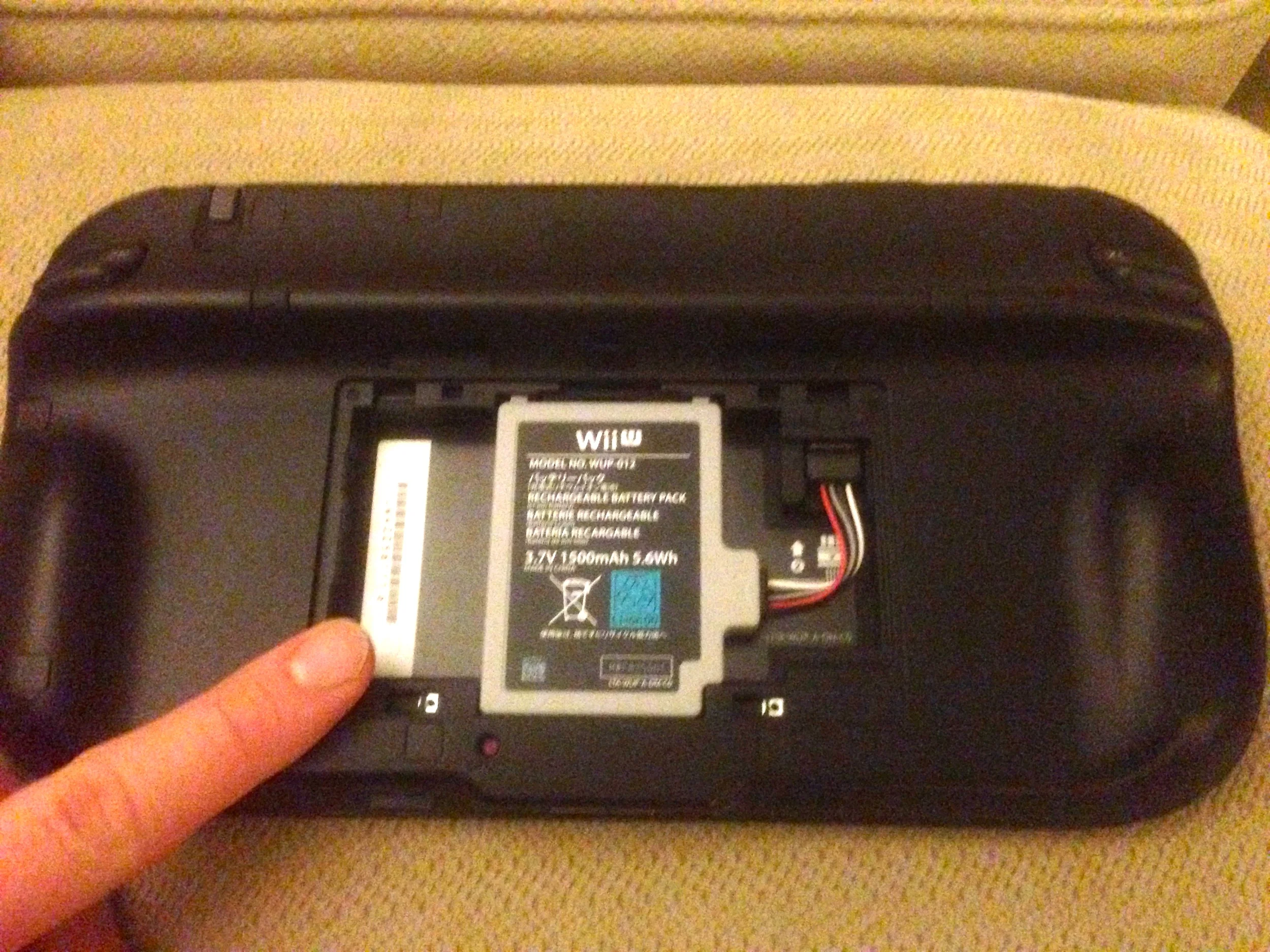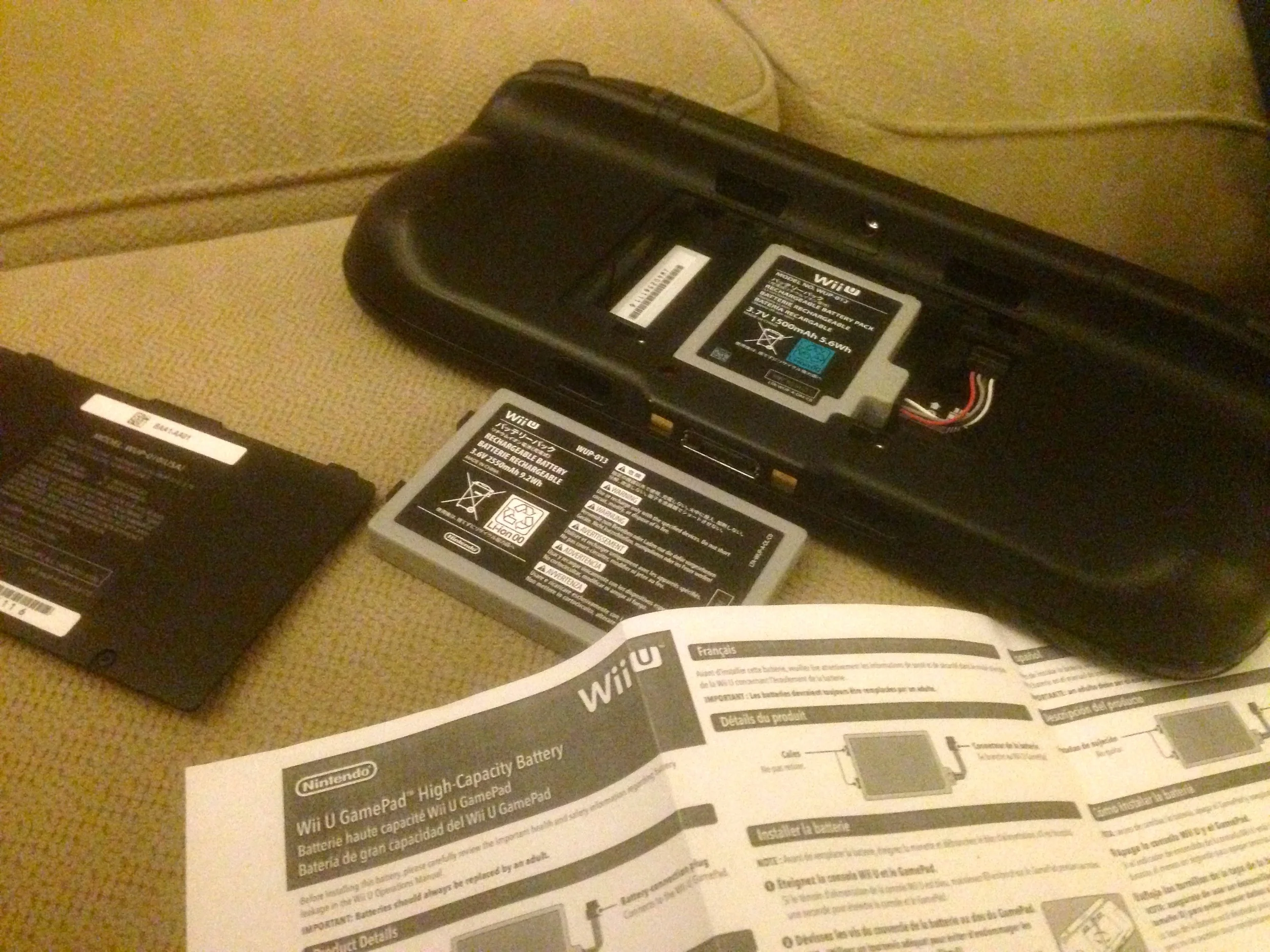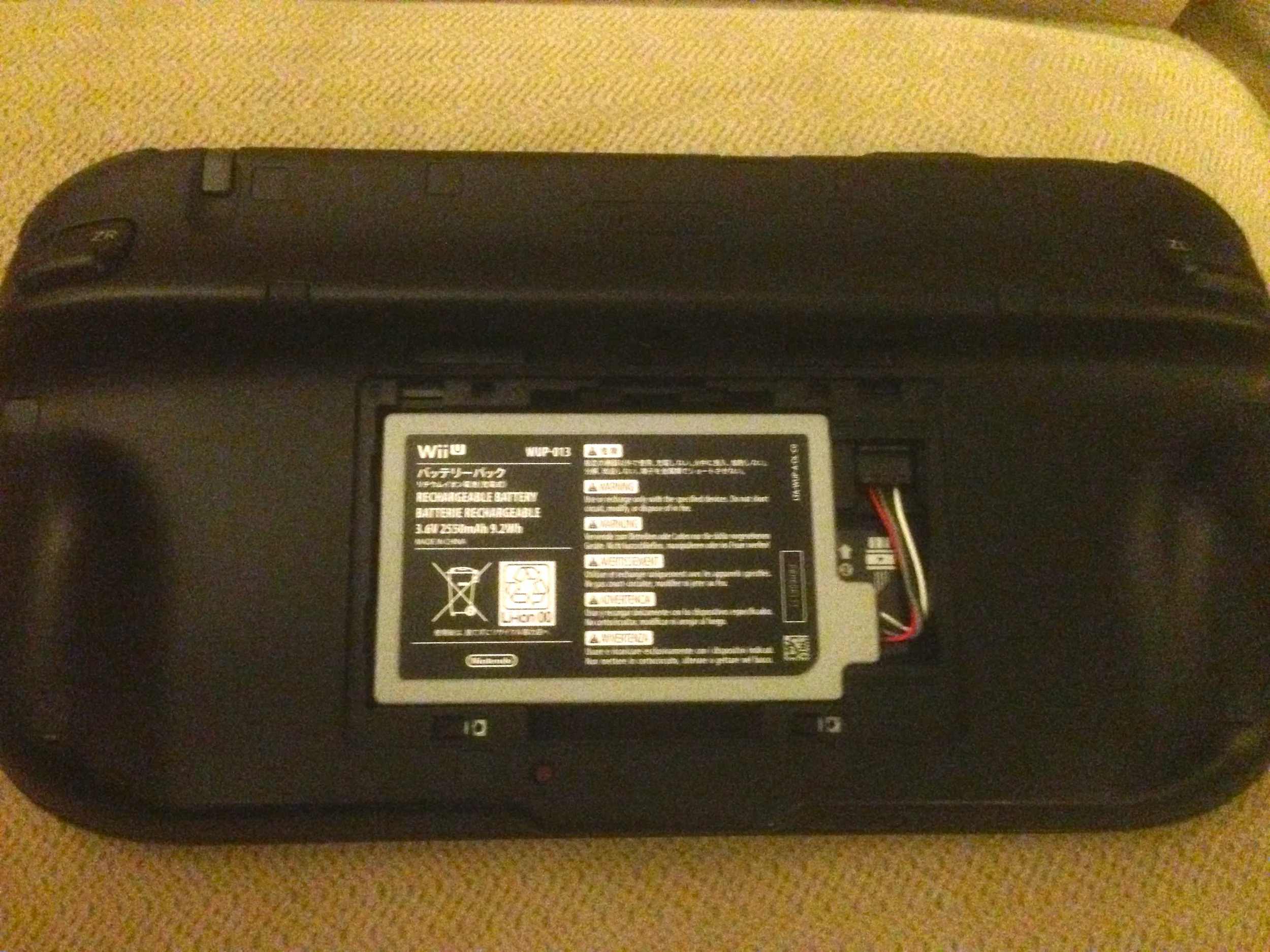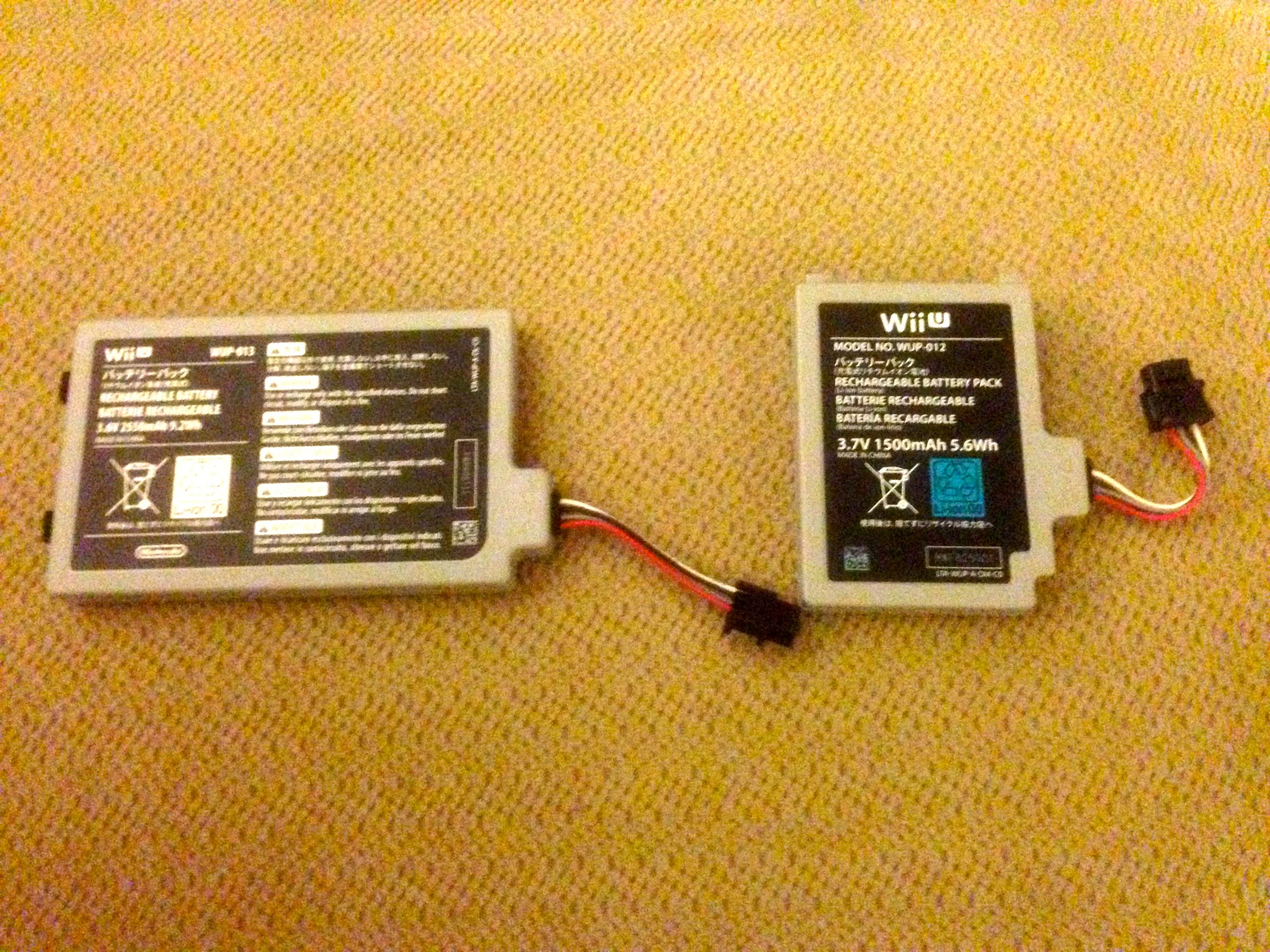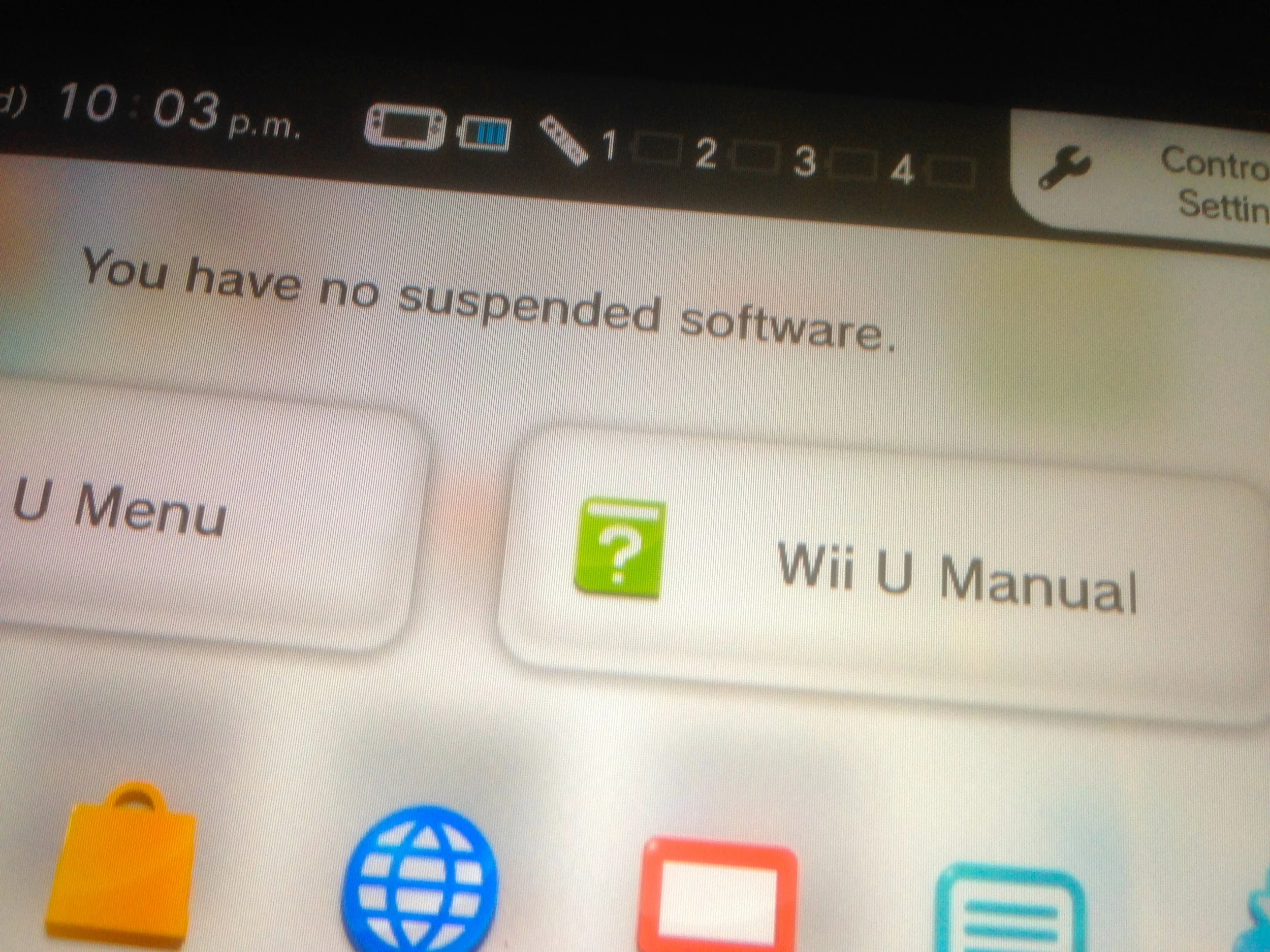When the Wii U released in November 2012 (could it really be almost two years ago!?), one of the criticisms levied against the console was the GamePad's laughably short battery life, which clocked in at just about three hours. For a system that was making a run a the tablet market, it seemed like a glaring omission, especially when iPads have been boosting nearly ten hour batteries for some time now.
Of course, I don't mean to imply that the Wii U is actually a true tablet competitor, but ideal usage of the console does imply some amount of tablet-esque practices. Imagine this hypothetical night: you get home from work and fire up the Wii U to do a quick Wii Fit U weigh-in and then check out the latest posts on Miiverse. Let's say that takes 15 minutes. Then, a little internet browsing (the system actually has a competent browser, if you can believe it) and a few YouTube videos and you're maybe up to 40 minutes. Time to make dinner and watch something on Netflix while you eat, which probably takes you up to an hour and a half. Dinner's over, so you play some Super Mario 3D World for an hour, bringing your total time to two and a half hours.
With the original GamePad battery's life, you are nearly out of juice and can expect to see that menacing red light any time now. And, the reality is that my whole hypothetical scenario probably would take a little bit longer with bathroom breaks, tending to a dog, pausing things, and so on. You're certainly not going to be able to make it through a night without the GamePad sitting on the charger and being, undeniably, not a tablet. The charging cradle, while nice, effectively turns the unique controller into a tiny TV that, in my house, sits about seven or eight feet away from my couch.
So, when Nintendo, in December 2013, released an extended battery for the Wii U GamePad, I was curious. On one hand, I had managed for over a year to get by with the paltry three hours by obsessively charging during shows or when I paused games. Maybe I didn't need to spend an extra $32 on a fancy battery. But those workarounds had led to me using the console less for video streaming in favor of the PlayStation 3 with its lengthy controller life. And there had been times I'd put the GamePad back on its cradle when I might have played more simply because I had no other choice.
Sadly, when I finally decided to buy the extra battery, it was sold out. In fact, it remained sold out for months. It stayed out-of-stock on Nintendo's online store so long that I had almost resigned myself to admit that it was a blip on the radar, a product Nintendo released to appease the most vocal complainers. To date, they still haven't made this battery the default one to ship with new systems.
And, then, in late October 2014, I Googled once more to see if this near-legendary battery was available. Shockingly, it was! Perhaps new stock had been ordered with the impending release of Super Smash Bros. for Wii U; whatever the reason, though, I wasted no time in ordering one.
Today, it arrived, but the biggest surprise was not the luxury of the lengthier battery life; rather, it was the realization that Nintendo might have been planning to sell this "premium" battery all along.
Two things stuck out to me when I removed the back panel of the GamePad to switch batteries: 1. the original battery is tiny and 2. they left a HUGE FREAKING SPACE for a larger battery. I mean, you could store a small coin collection in there!
Nintendo has long been a company that prizes economy and practicality over fancy bells and whistles (I'm thinking of you, launch-era PS3). Additionally, products like the Nintendo 64, which featured an expandable RAM port and a dock to connect a rewritable disk drive (only in Japan), show the company's propensity for future-proofing their hardware. But a deliberately small battery that actively works again the "fun factor" of the machine? That seems un-Nintendo to me.
Maybe there were supply chain issues. Maybe that extra battery really threw off the whole economic equation of the console. I would say, "maybe they were trying to make an extra buck," but the extremely limited availability of this "accessory" seems to fly in the face of that theory. Whatever the case, it's unfortunate that this isn't the standard battery for the console.
Here are a few pictures of the installation process, which was, admittedly, very quick and easy.
The only tool you need is a size 0 screwdriver (I had one in a tool set), which is good to know in case you ever just need to replace the battery, let alone extend it. And you can see that the pre-loaded charge was around 75%, which isn't bad (although the instructions recommend charging before use). I still just can't shake the feeling that Nintendo got away with something here.


